
| Version | Summary | Created by | Modification | Content Size | Created at | Operation |
|---|---|---|---|---|---|---|
| 1 | Sirius Huang | -- | 2627 | 2022-11-16 01:37:29 |
Video Upload Options
Grazing is a method of feeding in which a herbivore feeds on plants such as grasses, or other multicellular organisms such as algae. In agriculture, grazing is one method used whereby domestic livestock are used to convert grass and other forage into meat, milk and other products. Many small selective herbivores follow larger grazers, who skim off the highest, tough growth of plants, exposing tender shoots. For terrestrial animals, grazing is normally distinguished from browsing in that grazing is eating grass or forbs, and browsing is eating woody twigs and leaves from trees and shrubs. Grazing differs from true predation because the organism being grazed upon is not generally killed. Grazing differs from parasitism as the two organisms live together in a constant state of physical externality (i.e. low intimacy). Water animals that feed for example on algae found on stones are called grazers-scrapers. Grazers-scrapers feed also on microorganisms and dead organic matter on various substrates.
1. In Animal Behaviour
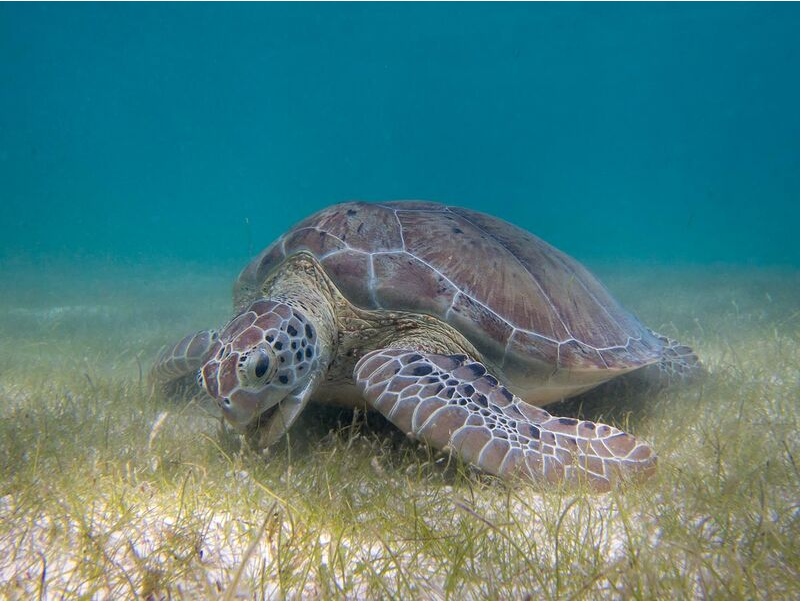
Grazing is a method of feeding in which a herbivore feeds on plants such as grasses, or other multicellular organisms such as algae.
1.1. Graminivory
Graminivory is a form of grazing involving feeding primarily on grass[1] (specifically "true" grasses in the Poaceae). Horses, cattle, capybara, hippopotamuses, grasshoppers, geese, and giant pandas are graminivores. Giant pandas (Ailuropoda melanoleuca) are obligate bamboo grazers, 99% of their diet consisting of sub-alpine bamboo species.[2]
1.2. Coprophagy
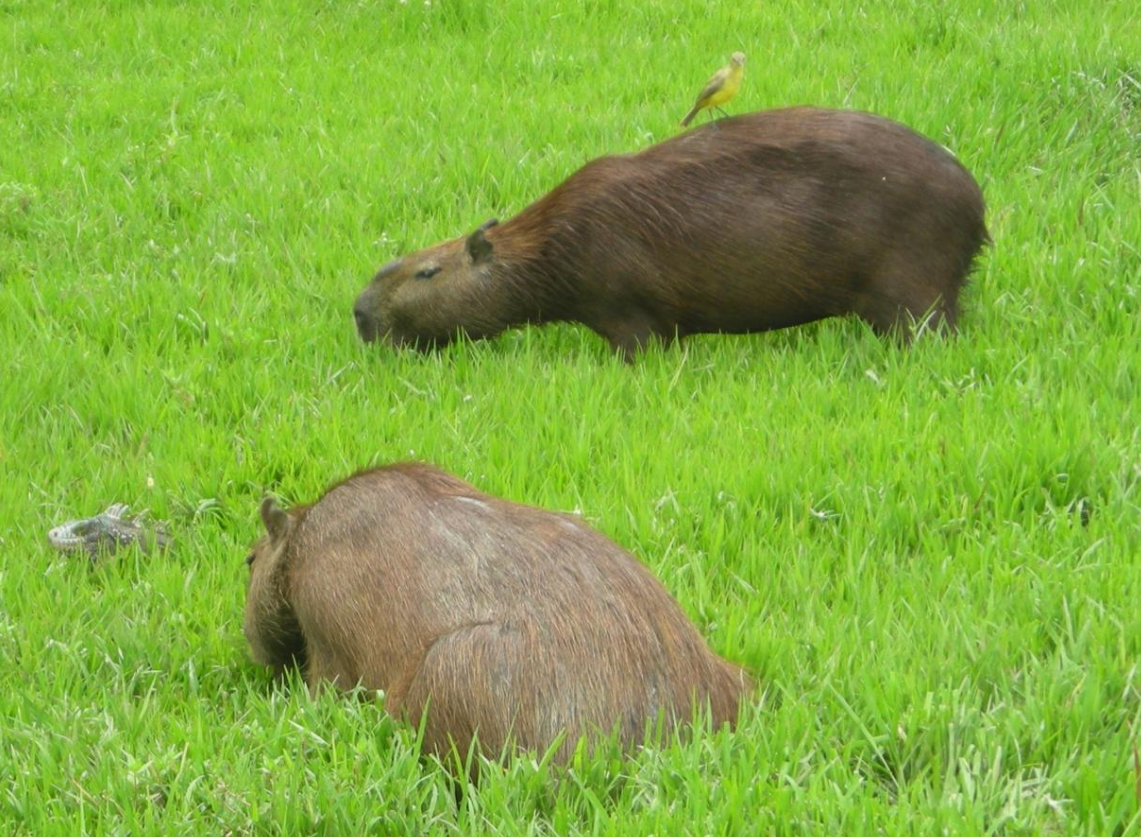
Rabbits are herbivores that feed by grazing on grass, forbs, and leafy weeds. They graze heavily and rapidly for about the first half-hour of a grazing period (usually in the late afternoon), followed by about half an hour of more selective feeding. If the environment is relatively non-threatening, the rabbit remains outdoors for many hours, grazing at intervals. Their diet contains large amounts of cellulose, which is hard to digest. Rabbits solve this problem by using a form of hindgut fermentation. They pass two distinct types of feces: hard droppings and soft black viscous pellets, the latter of which are known as caecotrophs and are immediately eaten (coprophagy). Rabbits reingest their own droppings (rather than chewing the cud as do cows and many other grazer) to digest their food further and extract sufficient nutrients.[3]
Capybara (Hydrochoerus hydrochaeris) are herbivores that graze mainly on grasses and aquatic plants,[4][5] as well as fruit and tree bark.[6] As with other grazers, they can be very selective[7] and feed on the leaves of one species, disregarding other species surrounding it. They eat a greater variety of plants during the dry season, as fewer plants are available. While they eat grass during the wet season, they have to switch to more abundant reeds during the dry season.[8] The capybara's jaw hinge is not perpendicular and therefore they chew food by grinding back-and-forth rather than side-to-side.[9] Capybara are coprophagous, as a source of bacterial gut flora, to help digest the cellulose in the grass that forms their normal diet, and to extract the maximum protein and vitamins from their food. They may also regurgitate food to masticate again, similar to cud-chewing by a cow.[10] As with other rodents, the front teeth of capybara grow continually to compensate for the constant wear from eating grasses;[11] their cheek teeth also grow continuously.[9]
1.3. Pseudoruminant
The hippopotamus is a large, semi-aquatic, mammal inhabiting rivers, lakes and mangrove swamps. During the day, they remain cool by staying in the water or mud; reproduction and childbirth both occur in water. They emerge at dusk to graze on grasses. While hippopotamuses rest near each other in the water, grazing is a solitary activity. Their incisors can be as long as 40 cm and the canines up to 50 cm,[12] however, the canines and incisors are used for combat and play no role in feeding. Hippos rely on their broad, horny lips to grasp and pull grasses which are then ground by the molars.[13] The hippo is considered to be a pseudoruminant, it has a complex three- or four-chambered stomach but does not "chew cud".[14]
1.4. Non-Grass Grazing
Although grazing is typically associated with mammals feeding on grasslands, or more specifically livestock in a pasture, ecologists sometimes use the word in a broader sense, to include any organism that feeds on any other species without ending the life of the prey organism.[15]
Use of the term varies even more than this, for example a marine biologist may describe herbivorous sea urchins that feed on kelp as grazers, even when they kill the organism by cutting the plant at the base. Malacologists sometimes apply the word to aquatic snails that feed by consuming the microscopic film of algae, diatoms and detritus, a biofilm, that covers the substrate and other surfaces underwater.
2. In Agriculture
2.1. United States
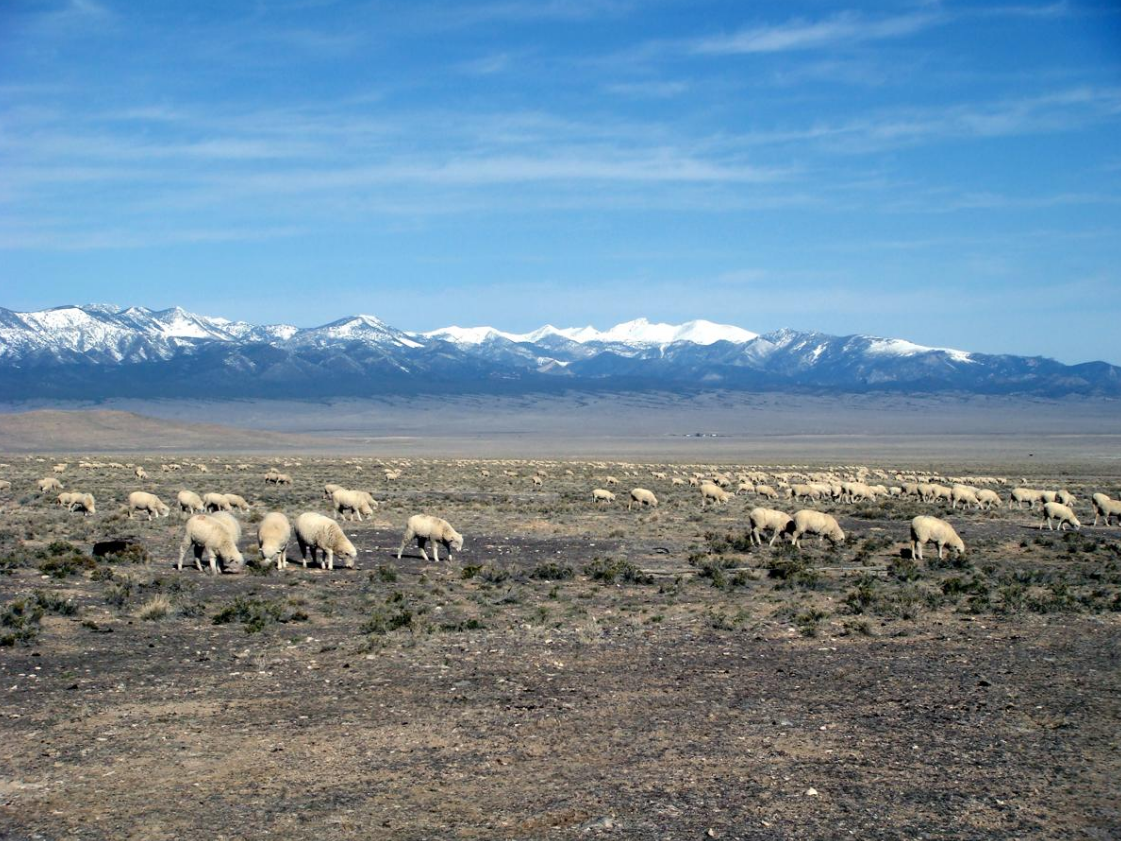
The use of livestock grazing can be dated back to the Civil War. During this time, land ownership was not common, and ranchers grazed their cattle on the surrounding, often federal, land. Not having a permanent home, these cowboys would frequently graze an area down, and then continue on their way. More commonly, however, cattle were rotated between summer and winter ranges. Soon, the public saw how profitable cattle could be and many tried to get into the cattle business. With the appearance of free, unlimited grass and feed, the land became overcrowded and the forage rapidly depleted. Ranchers tried to put a stop to this by using barbed wire fences to barricade their land, water sources, and cattle. After failed attempts, the Taylor Grazing Act was enacted in 1934. This act was put into place to help regulate the use of public land for grazing purposes and allotted ranchers certain paddocks of land. Additionally, “fees collected for grazing livestock on public lands was returned to the appropriate grazing district to be used for range improvements”.[16] The Taylor Grazing Act helped to stabilize rancher’s operations and allow them to continue raising their livestock.
3. Grazing Systems
In the 19th century, grazing techniques were virtually non-existent. Pastures would be grazed for long periods of time, with no rest in between. This led to overgrazing and it was detrimental to the land, wildlife, and livestock producers. Today, ranchers and range science researchers have developed grazing systems to help improve the forage production for livestock, while still being beneficial to the land.
3.1. Seasonal
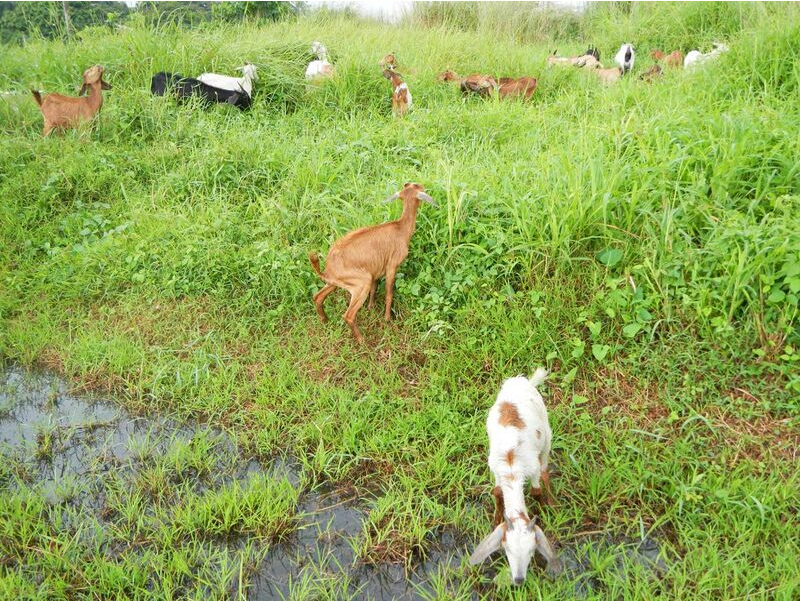
Seasonal grazing incorporates “grazing animals on a particular area for only part of the year”.[17] This allows the land that is not being grazed to rest and allow for new forage to grow.
3.2. Rotational
Rotational grazing “involves dividing the range into several pastures and then grazing each in sequence throughout the grazing period”.[17] Utilizing rotational grazing can improve livestock distribution while incorporating rest period for new forage.
3.3. Rest Rotation
Rest rotation grazing "divides the range into at least four pastures. One pasture remains rested throughout the year and grazing is rotated amongst the residual pastures."[17] This grazing system can be especially beneficial when using sensitive grass that requires time for rest and regrowth.
3.4. Deferred Rotation
Deferred rotation “involves at least two pastures with one not grazed until after seed-set”.[17] By using deferred rotation, grasses can achieve maximum growth during the period when no grazing occurs.
3.5. Patch-Burn Grazing
Patch-burn grazing burns a third of a pasture each year, no matter the size of the pasture. This burned patch attracts the grazers (cattle or bison) which graze the area heavily because of the fresh grasses that grow in. The other patches receive little to no grazing. During the next two years the next two patches burn consecutively and then the cycle begins anew. In this way, patches receive two years of rest and recovery from the heavy grazing. All this results in a diversity of habitats that different prairie plants and birds can utilize, mimicking the effects of the pre-historical bison/fire relationship where bison heavily graze one area and other areas have opportunity to rest.[18]
The Tallgrass Prairie Preserve in Northeast Oklahoma is within the Flint Hills ecosystem, and they have been patch-burn grazing with bison herds for over ten years now. Their efforts have effectively restored the bison/fire relationship on a large landscape scale of 30,000 acres (12,000 ha).[19]
3.6. Riparian Area Grazing Management
Riparian area grazing is used more towards improving wildlife and their habitats. It uses fencing to keep livestock off ranges near streams or water areas until after wildlife or waterfowl periods, or limiting the amount of grazing to a short period of time.
3.7. Conservation Grazing
Conservation grazing is the use of grazing animals to help improve the biodiversity of a site. Due to their hardy and thrifty nature, rare and native breeds are often used in conservation grazing.[20] In some cases, to re-establish traditional hay meadows, cattle such as the English Longhorn and Highland (which happen to be rare breeds) are used to provide low intensity grazing.[21]
4. Ecological Effects
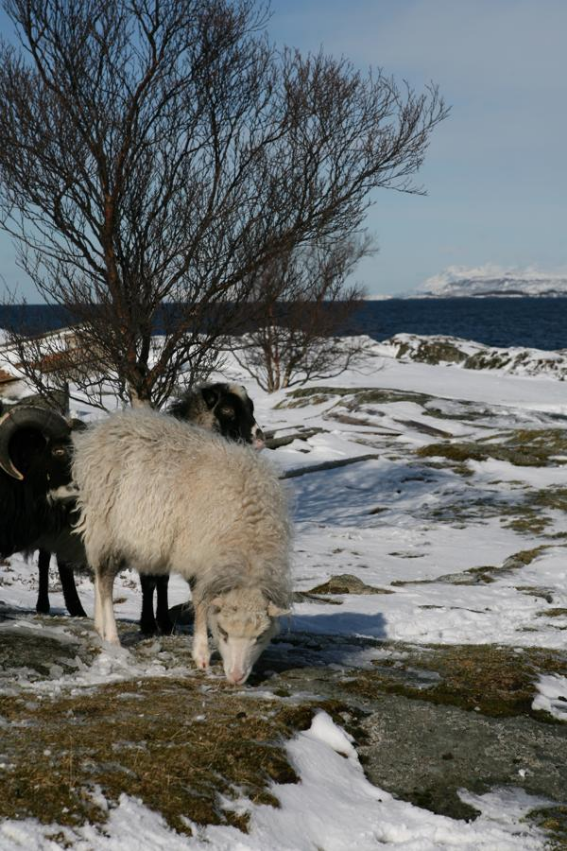
A number of ecological effects derive from grazing, and these may be either positive or negative. Negative effects of grazing include increased soil erosion, adverse water quality impacts from increased runoff and loss of biodiversity. For example, historical grazing, along with other land conversion, in Northern and Central California has reduced native chaparral and forest lands by approximately 70 percent. Ongoing grazing expansion {and land conversion} driven by human population growth in this region threatens the remaining integrity of California chaparral and woodlands habitat in this region.[22] In some habitats, appropriate levels of grazing may be effective in restoring or maintaining native grass and herb diversity in rangeland that has been disturbed by overgrazing, lack of grazing (such as by the removal of wild grazing animals), or by other human disturbance. Conservation grazing is the use of domestic livestock to manage such habitats, often to replicate the ecological effects of the wild relatives of livestock, or those of other species now absent or extinct. For example, heathland in Europe requires grazing by cattle, sheep or other grazers to maintain its structure and diversity.
Much grazing land has resulted from a process of clearance or drainage of other habitats such as woodland or wetland.[23]
In marine systems, grazing maintains habitat structure by preventing algal overgrowth, especially in coral reefs.[24] However, climate change can affect the grazing performance of marine animals (e.g. by changing the feeding rates of mesograzers), triggering broad ecological effects as oceans become warmer.[24]
5. Benefits
5.1. Production
By utilizing grazing systems, livestock production has the potential to be maximized. The Cattlemen's Beefboard claims that “approximately 85 percent of U.S. grazing lands are unsuitable for producing crops. Grazing animals on this land more than doubles the area that can be used to produce food. Cattle serve a valuable role in the ecosystem by converting the forages humans cannot consume into a nutrient-dense food”.,[25] but there is no scientific evidence which substantiates this claim.
5.2. Environmental
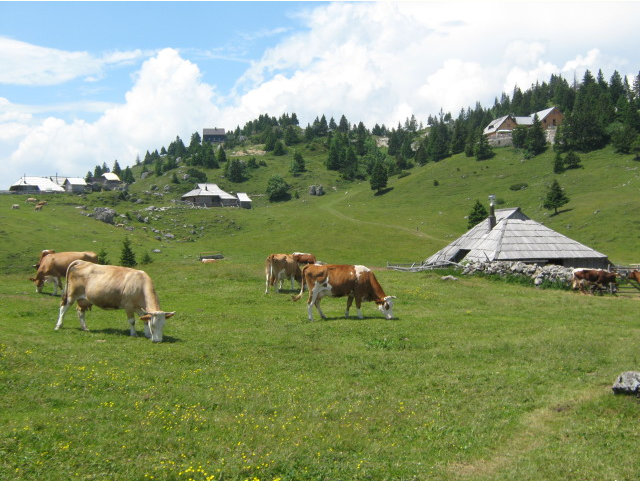
Following one of the largest international reports on animal agriculture, the United Nations said this of livestock grazing:
Grazing occupies 26 percent of the Earth's terrestrial surface, while feed crop production requires about a third of all arable land. Expansion of grazing land for livestock is a key factor in deforestation, especially in Latin America: some 70 percent of previously forested land in the Amazon is used as pasture, and feed crops cover a large part of the reminder. About 70 percent of all grazing land in dry areas is considered degraded, mostly because of overgrazing, compaction and erosion attributable to livestock activity.—Food and Agriculture Organization, Livestock impacts on the environment
Grazer urine and feces "recycle nitrogen, phosphorus, potassium and other plant nutrients and return them to the soil".[26] It also acts as rations for insects and organisms found within the soil. These organisms “aid in carbon sequestration and water filtration”.[26] Nutrients and organisms, all of which are necessary for soil to be prosperous and capable for production.
Grazing can also allow for "accumulation of litter (horizontal residue)"[27] helping to eliminate soil erosion. Soil erosion is important to minimize because with the soil erosion comes a loss of nutrients and the topsoil. All of which are important in the regrowth of vegetation.
5.3. Biodiversity
The explicit opinion of the Center for Biological Diversity is that grazing has significant negative impacts on local biodiversity.
Cattle destroy native vegetation, damage soils and stream banks, and contaminate waterways with fecal waste. After decades of livestock grazing, once-lush streams and riparian forests have been reduced to flat, dry wastelands; once-rich topsoil has been turned to dust, causing soil erosion, stream sedimentation and wholesale elimination of some aquatic habitats—Center for Biological Diversity, Grazing
When grass is grazed, the dead litter grass is reduced and allows for the birds to utilize it, while at the same time the livestock benefit.[28] Just as importantly, it increases species richness. When grazing is not used, many of the same grasses grow, for example, brome and bluegrass, consequently creating a monoculture.
In North American tallgrass prairies, diversity and productivity are controlled to a large extent by nitrogen availability…Nitrogen availability in prairies was driven by interactions between frequency of fires and grazing by large herbivores…Spring fires enhance growth of certain grasses, and herbivores such as bison preferentially graze these grasses, keeping a system of checks and balances working properly, and allowing many plant species to flourish.[29]
6. Grazing Management
Grazing management has two overall goals, each of which is multifaceted:
- Protecting the quality of the pasturage against deterioration by overgrazing
- In other words, maintain the sustainability of the pasturage
- Protecting the health of the animals against acute threats, such as:
- Grass tetany and nitrate poisoning
- Trace element overdose, such as molybdenum and selenium poisoning
- Grass sickness and laminitis in horses
- Milk sickness in calves
Appropriate land use and grazing management techniques need to balance maintaining forage and livestock production, while still maintaining biodiversity and ecosystem services.[30][31] Through the utilization of grazing systems and making sure to allow proper recovery periods for regrowth, both the livestock and ecosystem benefit. Along with recovery periods, producers can keep a low density on a pasture, so as not to overgraze. Controlled burning of the land can be valuable in the regrowth of indigenous plants, and new lush growth. Although grazing can be problematic for the ecosystem, well-managed grazing techniques can reverse damage and improve the land.
6.1. England and Wales
On commons in England and Wales, rights of pasture and pannage for each commoner are tightly defined by number and type of animal, and by the time of year when certain rights could be exercised. For example, the occupier of a particular cottage might be allowed to graze fifteen cattle, four horses, ponies or donkeys, and fifty geese, whilst the numbers allowed for their neighbours would probably be different. On some commons (such as the New Forest and adjoining commons), the rights are not limited by numbers, and instead a marking fee is paid each year for each animal turned out.[32] However, if excessive use was made of the common, for example, in overgrazing, a common would be stinted,[33] that is, a limit would be put on the number of animals each commoner was allowed to graze. These regulations were responsive to demographic and economic pressure. Thus rather than let a common become degraded, access was restricted even further.
References
- "Definition of GRAMINIVOROUS". http://www.merriam-webster.com/dictionary/graminivorous.
- ZHOU, Shiqiang (2012). "Effects of wildness training giant pandas? Grazing and artificial harvesting on clone population biomass of umbrella bamboo (Fargesia robusta)". Chinese Journal of Applied & Environmental Biology 18 (1): 1–8. doi:10.3724/sp.j.1145.2012.00001. http://en.cnki.com.cn/Article_en/CJFDTOTAL-YYHS201201001.htm.
- "Information for Rabbit Owners — Oak Tree Veterinary Centre". Oaktreevet.co.uk. Archived from the original on 2012-06-23. https://web.archive.org/web/20120623015452/http://www.oaktreevet.co.uk/Pages/leaflets/rabbit%20general.htm. Retrieved 2010-08-30.
- Capybara Facts. Smithsonian National Zoological Park. Retrieved on December 16, 2007. https://web.archive.org/web/20050930231549/http://nationalzoo.si.edu/Animals/Amazonia/Facts/capybarafacts.cfm
- "Dieta del capibara Hydrochaeris hydrochaeris (cavia: Hydrochaeridae) en Caño Limón, Arauca, Colombia". Revista de Biología Tropical 51 (2): 571–578. 2003. PMID 15162749. http://www.scielo.sa.cr/scielo.php?script=sci_arttext&pid=S0034-77442003000200029&lng=es&nrm=iso. PDF
- Capybara. Palm Beach Zoo. Retrieved on December 17, 2007. https://web.archive.org/web/20100620162726/http://palmbeachzoo.org/animals/capybara.html
- Quintana, R.D., S. Monge, A.I. Malvárez (1998). "Feeding patterns of capybara Hydrochaeris hypdrochaeris (Rodentia, Hydrochaeridae) and cattle in the non-insular area of the Lower Delta of the Parana River, Argentina". Mammalia 62 (1): 37–52. doi:10.1515/mamm.1998.62.1.37. https://dx.doi.org/10.1515%2Fmamm.1998.62.1.37
- Barreto, Guillermo R.; Herrera, Emilio A. (1998). "Foraging patterns of capybaras in a seasonally flooded savanna of Venezuela". Journal of Tropical Ecology 14: 87. doi:10.1017/S0266467498000078. https://dx.doi.org/10.1017%2FS0266467498000078
- Capybara. Hydrochaeris hydrochaeris. San Francisco Zoo https://web.archive.org/web/20070614005832/http://www.sfzoo.org/cgi-bin/animals.py?ID=90
- Lord-Rexford, D. (1994). "A descriptive account of capybara behaviour". Studies on Neotropical Fauna and Environment 29 (1): 11–22. doi:10.1080/01650529409360912. https://dx.doi.org/10.1080%2F01650529409360912
- Bristol Zoo Gardens (UK) ''Capybara'' . Bristolzoo.org.uk. Retrieved on 2011-12-07. http://www.bristolzoo.org.uk/learning/animals/mammals/capybara
- Estes, R. (1992). The Behavior Guide to African Mammals: Including Hoofed Mammals, Carnivores, Primates. University of California Press. pp. 222–26. ISBN 0-520-08085-8.
- Kingdon, J. (1988). East African Mammals: An Atlas of Evolution in Africa, Volume 3, Part B: Large Mammals. University Of Chicago Press. pp. 256–77. ISBN 0-226-43722-1.
- Eltringham, S.K. (1999). The Hippos. Poyser Natural History Series. Academic Press. ISBN 0-85661-131-X.
- Begon, M., Townsend, C. and Harper, J. (1996). Ecology (3 ed.). Blackwell Science, London.
- "History of Public Land Livestock Grazing". Retrieved 1 Dec 2008 https://www.nv.blm.gov/range/History_of_Grazing.htm
- "Grazing Systems". Grasslands Conservation Council of British Columbia. Retrieved 1 Dec 2008 http://www.bcgrasslands.org/grazingsystems.htm
- Fuhlendorf, S. D.; Engle, D. M. (2004). "Application of the fire–grazing interaction to restore a shifting mosaic on tallgrass prairie". Journal of Applied Ecology 41 (4): 604–614. doi:10.1111/j.0021-8901.2004.00937.x. https://dx.doi.org/10.1111%2Fj.0021-8901.2004.00937.x
- "The Nature Conservancy in Oklahoma". http://www.nature.org/wherewework/northamerica/states/oklahoma/preserves/tallgrass.html.
- "Conservation grazing". Rare Breeds Society Trust. http://www.rbst.org.uk/Rare-and-Native-Breeds/Uses-of-Rare-Breeds/Conservation-Grazing. Retrieved May 1, 2016.
- "Shapwick Moor Nature Reserve". Archived from the original on April 1, 2016. https://web.archive.org/web/20160401224556/http://www.avalonmarshes.org/Shapwick_Moor. Retrieved April 24, 2016.
- "C. Michael Hogan (2008) Aesculus californica, Globaltwitcher.com, ed. N. Stromberg". http://www.globaltwitcher.com/artspec_info.asp?thingid=82383.
- (1999) A. Crofts and R.G. Jefferson eds. (1999) Lowland Grassland Management Handbook, chapter 2 http://naturalengland.communisis.com/NaturalEnglandShop/product.aspx?ProductID=d7615a57-c014-40da-b5f8-a1c328aada56
- Pearson, Ryan M.; Jinks, Kristin I.; Brown, Christopher J.; Schlacher, Thomas A.; Connolly, Rod M. (2018). "Functional changes in reef systems in warmer seas: Asymmetrical effects of altered grazing by a widespread crustacean mesograzer". Science of the Total Environment 644: 976–981. doi:10.1016/j.scitotenv.2018.07.051. ISSN 0048-9697. https://doi.org/10.1016/j.scitotenv.2018.07.051.
- ""Fact Sheet: The Environment and Cattle Production" Cattlemen's Beefboard. Retrieved 8 Dec 2008". http://www.beefboard.org/news/files/factsheets/The-Environment-And-Cattle-Producation.pdf.
- "Benefits of Grazing Cattle on the Prairie". Native Habitat Organization. Retrieved 1 Dec 2008 http://www.nativehabitat.org/grazing.html
- Dalrymple, R.L.. "Fringe Benefits of Rotational Stocking". Intensive Grazing Benefits. Noble Foundation. Retrieved 1 Dec 2008 http://intensivegrazing.tamu.edu/benefits.htm
- "Waterfowl area grazing benefits birds, cattle - The Fergus Falls Daily Journal". 21 February 2008. http://www.fergusfallsjournal.com/news/2008/feb/21/waterfowl-area-grazing-benefits-birds-cattle/.
- "Bison Grazing Increases Biodiversity In ...( Grazing by herbivorous mammals like b...)". http://news.bio-medicine.org/biology-news-2/Bison-Grazing-Increases-Biodiversity-In-Grasslands-14701-1/.
- Semi-natural Grasslands, National Ecosystem Assessment http://uknea.unep-wcmc.org/LinkClick.aspx?fileticket=Y4pLIpagaf0%3d&tabid=82
- "Mountains, Moorlands and Heahtlands, National Ecosystem Assessment". http://uknea.unep-wcmc.org/LinkClick.aspx?fileticket=3ef%2bGcq2VLw%3d&tabid=82.
- Forest rights. http://www.verderers.org.uk/rights.html
- Susan Jane Buck Cox (1985). "No tragedy on the Commons". Environmental Ethics 7: 49–62. doi:10.5840/enviroethics1985716. http://dlc.dlib.indiana.edu/dlc/bitstream/handle/10535/3113/buck_NoTragedy.pdf?sequence=1&isAllowed=y.




